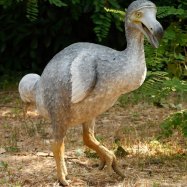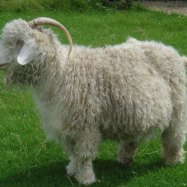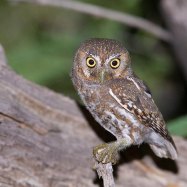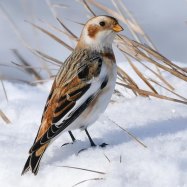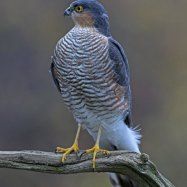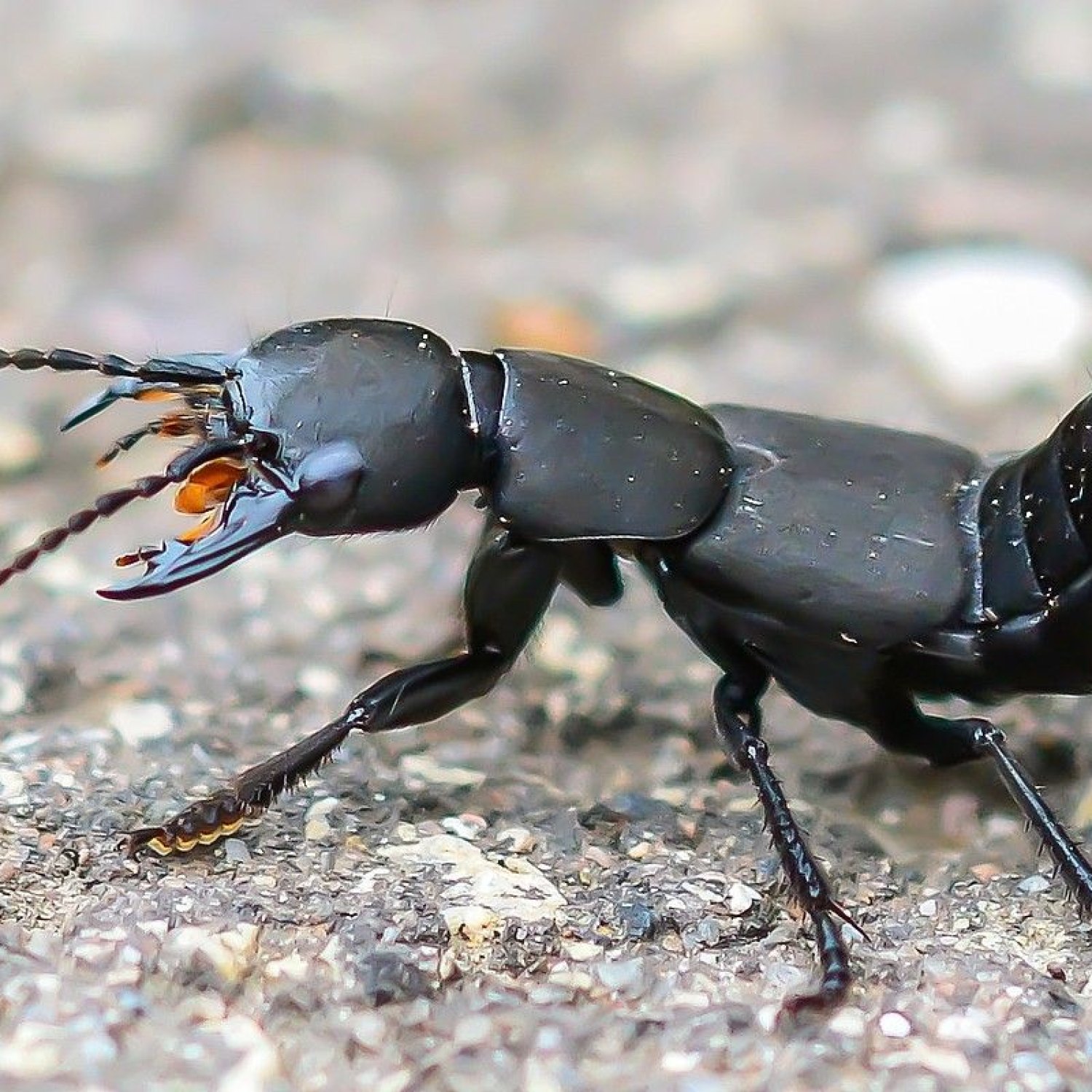
Devils Coach Horse Beetle
Up to 3 cm
The Devils Coach Horse Beetle, with a length of up to 3 cm, can be found throughout Europe and Asia. Known for its striking black color and long, narrow body shape, this beetle belongs to the Staphylinidae family. These predators play an important role in controlling pests, making them a valuable part of our ecosystem. #DevilsCoachHorseBeetle #Staphylinidae #pestcontrol #biodiversity
Animal Details Summary:
Common Name: Devils Coach Horse Beetle
Kingdom: Animalia
Habitat: Woodlands, gardens, and parks
The Fierce and Fascinating World of Devils Coach Horse Beetle
Nature is full of wonders, and one such fascinating creature is the Devils Coach Horse Beetle. With its shiny black exterior and long, narrow body, this predatory insect has captured the attention of many. However, its name might frighten some, giving an impression of a ferocious and menacing creature. But don't let its name deceive you; the Devils Coach Horse Beetle is a remarkable and valuable addition to the world of insects Devils Coach Horse Beetle.From the Kingdom of Animalia to its Habitat
The Devils Coach Horse Beetle, also known as Ocypus olens, belongs to the animal kingdom, Animalia. It falls under the phylum Arthropoda, which includes a diverse range of insects, spiders, and crustaceans. This class insecta belongs to the order Coleoptera, which includes beetles, one of the largest groups of insects with over 400,000 known species.These tiny creatures are native to woodlands, gardens, and parks, making their home in the United Kingdom. However, they are widespread throughout Europe and parts of Asia. If you happen to be in these regions, you might just spot this shiny black beetle roaming around.
An Insect with a Fierce Feeding Method
The Devils Coach Horse Beetle is a predator, feeding on other insects and their larvae. They have a formidable set of jaws that open like a pair of scissors to seize their prey. These beetles are active at night, making hunting easier for them Dark Eyed Junco.Despite being predators, they have a significant role in maintaining the balance of ecosystem and controlling the population of other insects. Thanks to these beetles, we can enjoy a pest-free garden!
The Journey of the Devils Coach Horse Beetle
The Devils Coach Horse Beetle has a complex life cycle, starting from the larval stage. The female beetles lay eggs on the soil or decaying plants, and after a few days, the eggs hatch into larvae. These larvae go through several stages before developing into pupae and eventually emerging as adult beetles.The journey of these beetles is a long one, and it takes about a year for them to reach their full adult size. During this time, they may go through several molts, shedding their old skin to make way for new growth.
Physical Characteristics and Adaptability
The Devils Coach Horse Beetle is known for its shiny black coloration, which is a result of a waxy coating on their body. This coating protects them from predators, harsh weather conditions, and even helps retain moisture.Their body shape is long and narrow, resembling a coach, which gives them their name. They also have wings, although they can't fly. Instead, they use their wings for balance and quick movements.
These beetles have an incredible adaptability that allows them to survive in different environments. They can withstand extreme temperatures and use their wings to quickly move to another location if needed.
Size Doesn't Matter
Although they are relatively small in size, with an average length of up to 3 cm, the Devils Coach Horse Beetle has gained quite a reputation for its ferocity. They have been known to bite when handled, and their powerful jaws can deliver a painful nip. However, their bite is not venomous, and they rarely bite humans unless provoked.Despite their fierce reputation, they are relatively harmless and play an essential role in maintaining the balance of the ecosystem.
A Valuable Creature for the Natural World
The Devils Coach Horse Beetle may seem like a minor creature in the grand scheme of things, but they play a crucial role in the natural world. They are natural predators, helping control the population of other insects and keeping the ecosystem in check.In addition to their predatory skills, these beetles also have a significant impact on the decomposition process. They feed on carrion and contribute to breaking down organic matter, which is vital for the nutrient cycle in the soil.
The Challenges They Face
Despite their adaptive and resilient nature, the Devils Coach Horse Beetle faces several challenges in the modern world. Like many other species, they are susceptible to habitat loss, pesticides, and climate change.Deforestation and urbanization are shrinking their natural habitats, leaving them with limited resources for survival. Pesticides used in agriculture and gardens pose a significant threat to these beetles and other insects.
It is crucial to raise awareness about the importance of preserving the natural world and its inhabitants, including the Devils Coach Horse Beetle.
An Insect Worth Appreciating
The Devils Coach Horse Beetle may not be the most well-known or glamorous creature, but they are worth appreciating. Their unique physical characteristics, remarkable adaptability, and vital role in the ecosystem make them a valuable addition to the natural world.It's time to change the way we view these tiny creatures and give them the recognition they deserve. Maybe the next time you spot a shiny black beetle, you'll see it in a whole new light, not just as a fierce predator, but as a valuable and essential member of the natural world.

Devils Coach Horse Beetle
Animal Details Devils Coach Horse Beetle - Scientific Name: Ocypus olens
- Category: Animals D
- Scientific Name: Ocypus olens
- Common Name: Devils Coach Horse Beetle
- Kingdom: Animalia
- Phylum: Arthropoda
- Class: Insecta
- Order: Coleoptera
- Family: Staphylinidae
- Habitat: Woodlands, gardens, and parks
- Feeding Method: Predatory
- Geographical Distribution: Europe and parts of Asia
- Country of Origin: United Kingdom
- Location: Throughout Europe and Asia
- Animal Coloration: Shiny black
- Body Shape: Long and narrow
- Length: Up to 3 cm
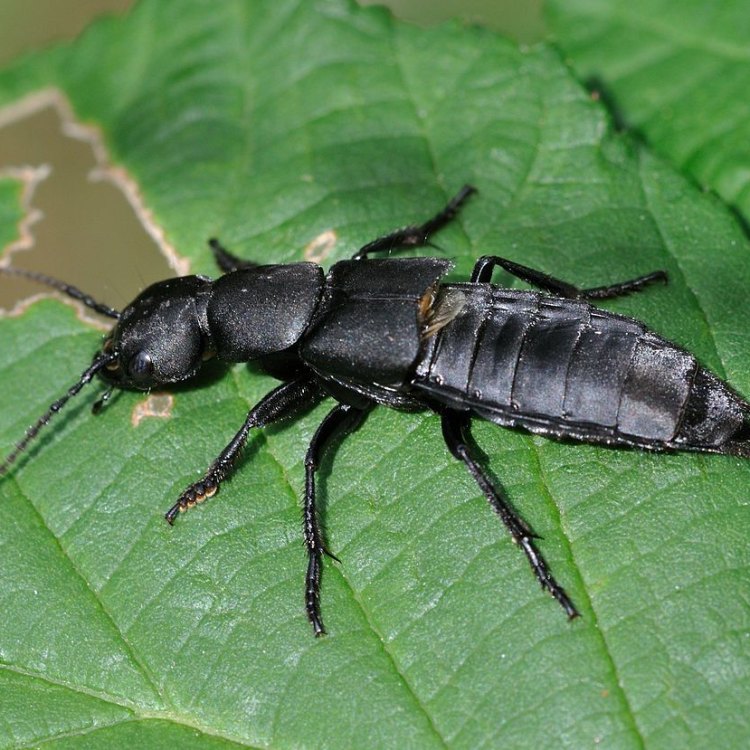
Devils Coach Horse Beetle
- Adult Size: Medium
- Average Lifespan: 1-2 years
- Reproduction: Sexual
- Reproductive Behavior: Males fight each other for mates
- Sound or Call: None
- Migration Pattern: Non-migratory
- Social Groups: Solitary
- Behavior: Nocturnal
- Threats: Habitat loss
- Conservation Status: Not evaluated
- Impact on Ecosystem: They eat other small invertebrates, potentially controlling population sizes
- Human Use: None
- Distinctive Features: Long and segmented abdomen, large jaws
- Interesting Facts: They can emit a foul-smelling odor when disturbed
- Predator: Birds, mammals, and reptiles
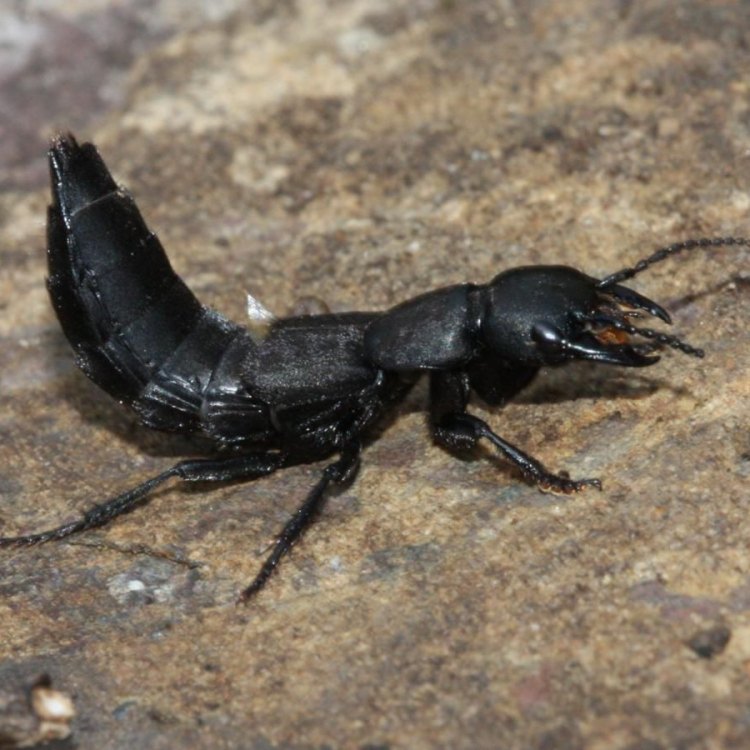
Ocypus olens
The Unique World of the Devils Coach Horse Beetle
Imagine walking through a dark forest at night, when suddenly, you come across a creature with a long, segmented body and large jaws. As it scurries away from you, you catch a whiff of its distinct odor. This is the Devils Coach Horse Beetle, a fascinating and often misunderstood insect.Despite its intimidating appearance and name, the Devils Coach Horse Beetle (Ocypus olens) is a harmless and important member of the ecosystem PeaceOfAnimals.Com. This medium-sized beetle can be found in Europe, Asia, and parts of North America. Let's take a closer look at the unique features and behaviors of this elusive insect.
Size and Lifespan
The Devils Coach Horse Beetle is a medium-sized insect, typically ranging from 20-28 millimeters in length. Its body is long and slender, with three segments and a distinct head. Its most distinctive feature is its large mandibles, which are used for grabbing prey. These mandibles are also used in defense, as the beetle is capable of inflicting a painful bite if threatened.On average, these beetles live for 1-2 years. However, their lifespan can be shorter in the wild due to predators and other environmental factors.
Reproduction and Sexual Behavior
Like most insects, the Devils Coach Horse Beetle reproduces sexually Dorkie. Mating typically takes place in the summer months, and males engage in fierce battles with each other to win over a female. These battles can be intense and can even lead to the death of one of the male beetles.After mating, the female will lay her eggs in the soil, where they will hatch into larvae. The larvae will go through several stages of development before reaching adulthood.
No Sound, No Migration, and Solitary Groups
One interesting fact about the Devils Coach Horse Beetle is that it does not make any sounds or calls, unlike other beetles. This is because it does not have any specialized structures for sound production. Instead, it relies on its large jaws and swift movements to defend itself and capture prey.These beetles are also non-migratory and do not have any set migration patterns. They are solitary insects and do not form social groups like some other species of beetles.
Nocturnal Behavior and Potential Threats
The Devils Coach Horse Beetle is a nocturnal insect, which means it is most active at night. During the day, it can be found hiding under logs, rocks, and other debris on the forest floor. This behavior not only helps them avoid predators but also allows them to conserve energy.Sadly, like many other species, the Devils Coach Horse Beetle is facing a major threat due to habitat loss. With the destruction of forests and other natural habitats, these beetles are losing their homes and food sources. This can have a significant impact on their population and overall survival.
Conservation Status and Impact on the Ecosystem
The IUCN (International Union for Conservation of Nature) has not evaluated the conservation status of the Devils Coach Horse Beetle. However, as mentioned earlier, their habitat loss is a major concern for their survival. Furthermore, they are also at risk of being accidentally killed by vehicle traffic, as they are often found on roads at night.Despite these risks, the Devils Coach Horse Beetle plays an important role in the ecosystem. They are predatory insects, feeding on other small invertebrates like slugs, worms, and snails. This makes them valuable for controlling the population sizes of these creatures, preventing potential outbreaks and imbalances in the ecosystem.
Human Interaction and Interesting Facts
One interesting fact about the Devils Coach Horse Beetle is its ability to emit a foul-smelling odor when disturbed. This odor is a defense mechanism against predators, similar to a skunk's spray. However, unlike a skunk, the odor is not harmful to humans and will usually dissipate quickly.Despite their unique features, the Devils Coach Horse Beetle does not have any significant human use. They are not hunted or cultivated in any way, and their presence does not have any economic or cultural value.
Predators and Survival Tactics
The Devils Coach Horse Beetle may have a fearsome appearance, but they have predators just like any other animal. Their biggest threat comes from birds, mammals, and reptiles, which may see them as a tasty meal. To defend themselves, these beetles will use their large jaws to bite and may also emit their foul odor to deter predators.In some cases, the beetles may also play dead, curling up their legs and pretending to be dead. This behavior can confuse predators and give the beetle a chance to escape.
In Conclusion
The Devils Coach Horse Beetle is an intriguing and unique insect that plays an important role in its ecosystem. Despite its intimidating appearance, it is a harmless creature that should be appreciated and protected. However, their population is at risk due to habitat loss, and it is crucial for us to take steps to ensure their survival.Next time you're walking in a forest at night, keep an eye out for these elusive beetles. And if you happen to come across one, remember to appreciate and respect its unique features and behaviors.
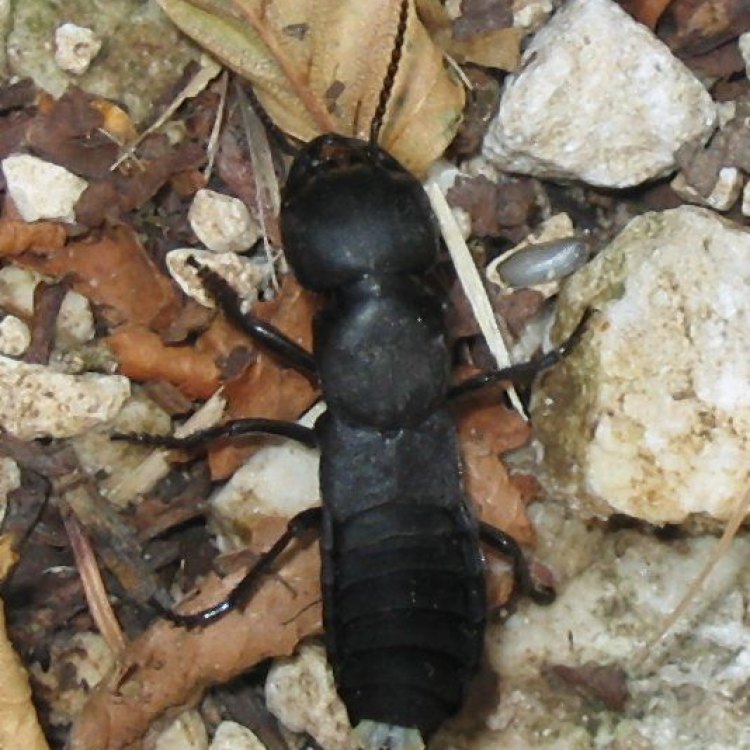
The Fierce and Fascinating World of Devils Coach Horse Beetle
Disclaimer: The content provided is for informational purposes only. We cannot guarantee the accuracy of the information on this page 100%. All information provided here may change without prior notice.


